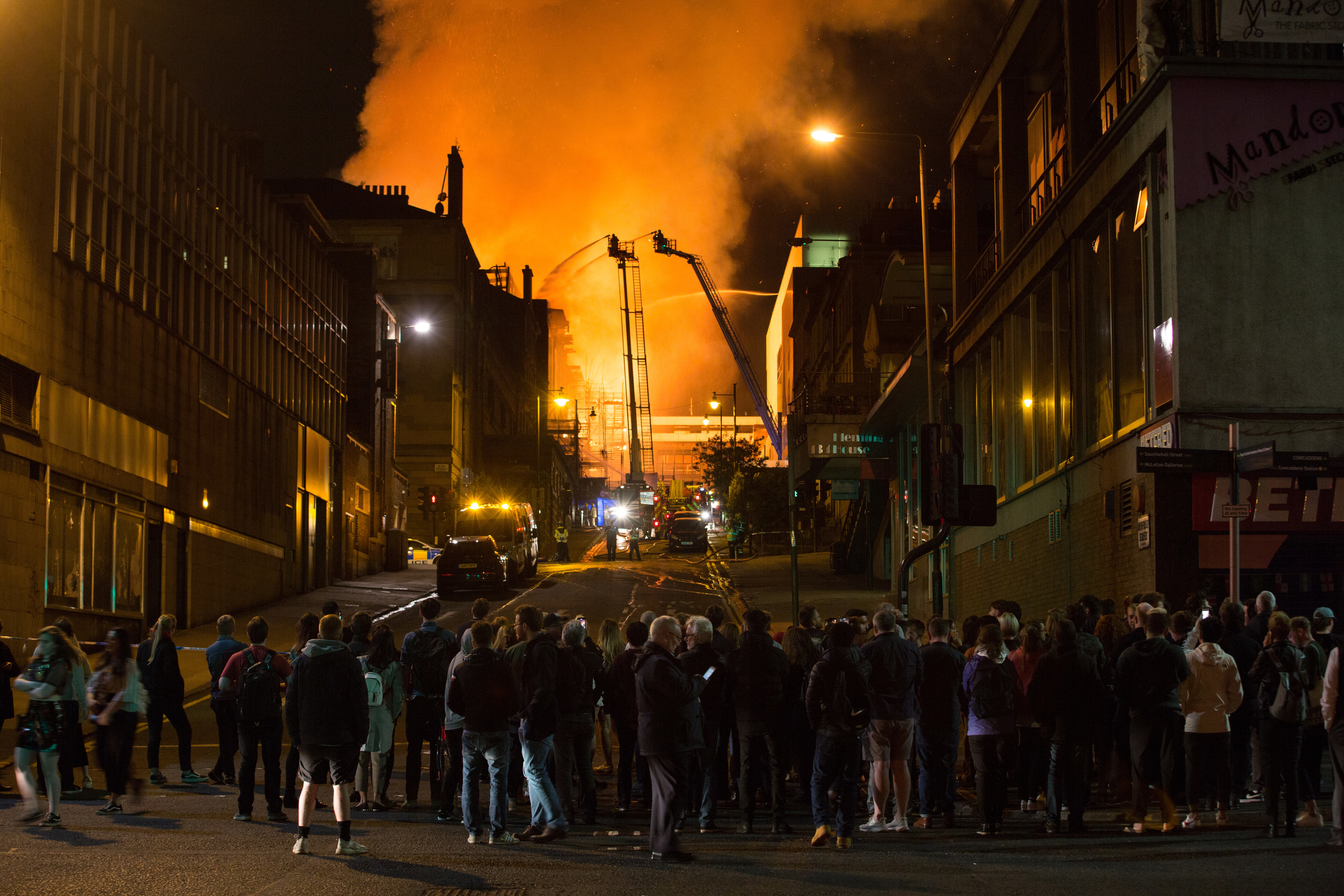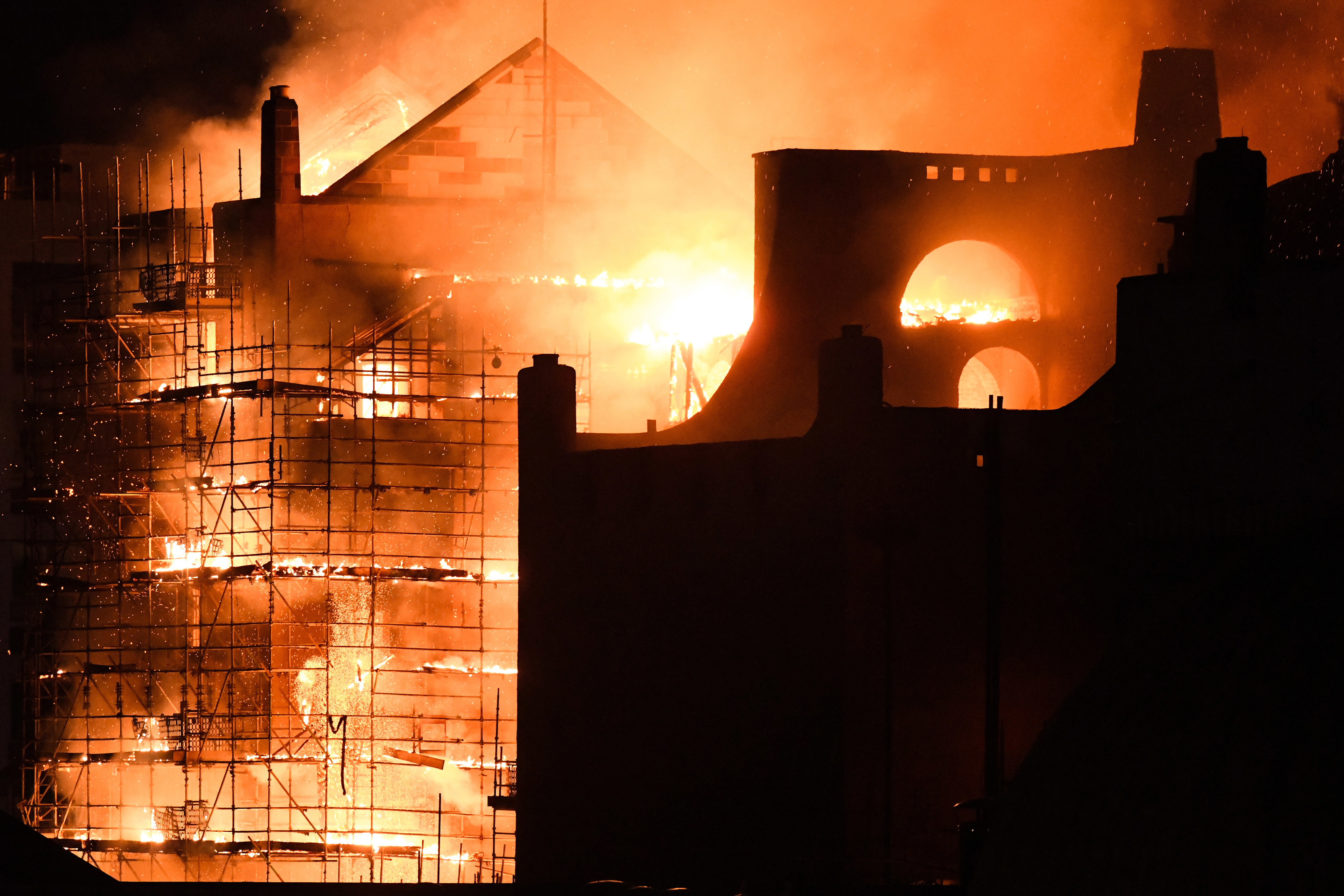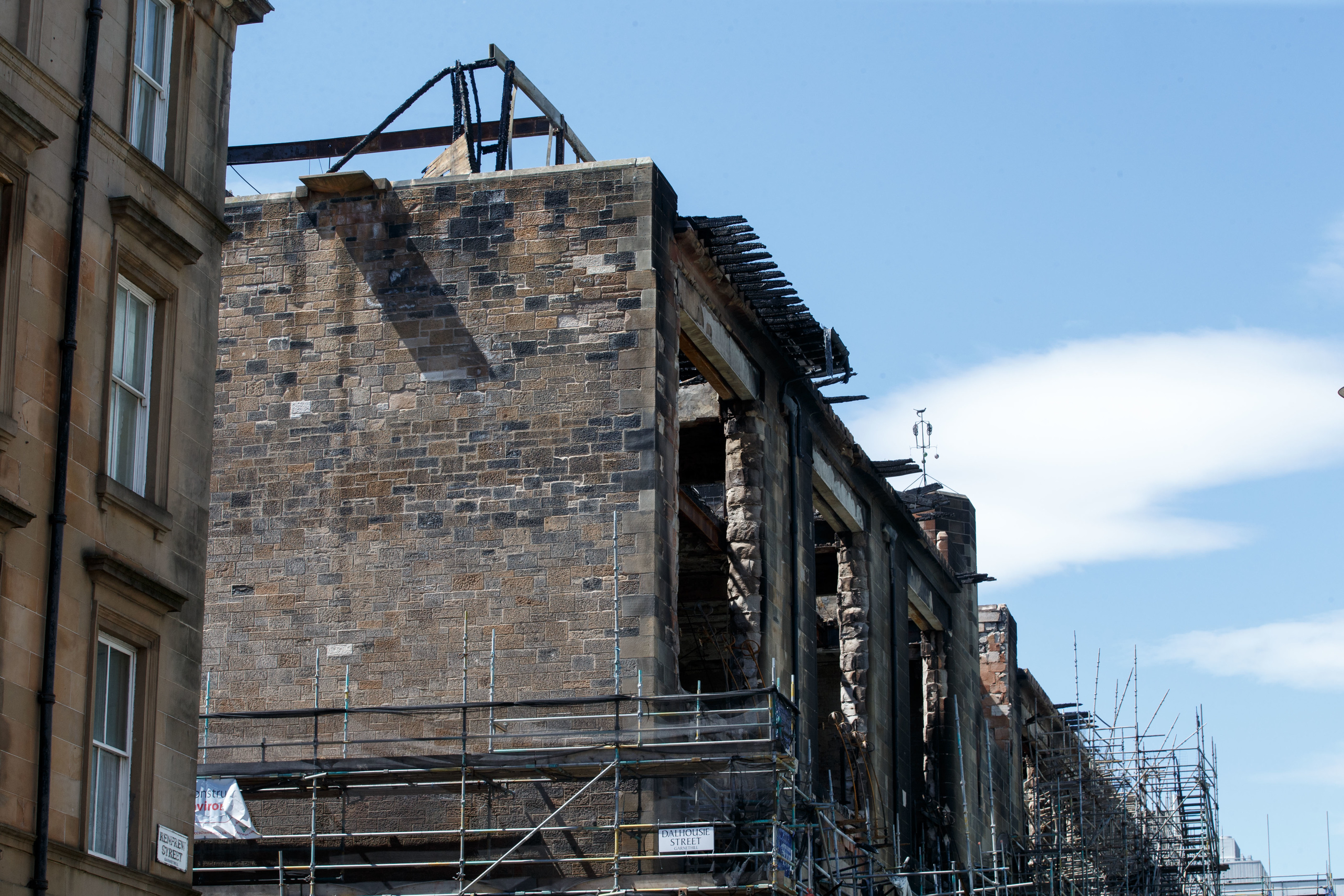
INVESTIGATORS probing the devastating blaze at Glasgow School of Art are scouring records of false alarms at the iconic building.
We can reveal the number of needless fire call-outs to the building are part of the inquiry as firefighters claim there were dozens of false alarms in the months running up to the blaze on June 15.
Fire service sources claim there were up to three false alarms a week at the art school in February, April, March and May but none in the three weeks before the fire last Friday night.
Flames were spotted at the Charles Rennie Mackintosh-designed building around 11.20pm and quickly spread, gutting the building and causing extensive damage to neighbouring properties including the O2 ABC concert venue on Sauchiehall Street.
The Mackintosh building was undergoing a major refurbishment by Kier Construction after being damaged in a fire in 2014 and was empty at the time.
Kier has said fire alarms and monitoring systems were in place along with 24-hour security and fire warden patrols at the site.
One source said: “What has emerged in the past week is that there were 36 false alarm calls to the building in four months. But there
were none in the month leading up to the fire.”
He said the record of alarms and call-outs would be among the issues examined by fire investigators.
A second source confirmed there had been a series of false alarms at the school, which had been expected to reopen next year.
Kier declined to answer questions about false alarms at the school, citing the ongoing investigation.
But the company said: “An agreed fire safety strategy was implemented for the build phase of the Mackintosh restoration project, which combined measures for the protection of all those entering the site to work and to alert the authorities in the event of an outbreak of fire.
“These included a smoke and heat detection system and regular evacuation tests as well as 24-hour, seven-days-a-week security and fire warden patrols by a team of three guards, originally appointed by the client after the 2014 fire and subsequently by Kier. We continue to work with and support Scottish Fire and Rescue Service and our client as they determine the next steps for the Mackintosh building and site.
“We have a passionate team of local construction and crafts people, skilled conservators, supply chain and engineering specialists who have worked incredibly hard on this iconic landmark and together we are all keen to do whatever we can to help moving forward.”
Last week the Scottish Fire and Rescue Service’s Assistant Chief Officer David McGown said the investigation would be “thorough”.
“However, I would like to stress that this is a very complex process and will take time,” he said. “It is of vital importance that we ensure the full facts and circumstances of this incident are clearly established.
“Our fire investigations team are specialists in their own field. They will look at every aspect of this incident, including the cause of the fire, how it spread and what safety measures were in place.
“We understand the need for clarity here and why so many want to know how this happened, but I would again like to reiterate that we need to establish the full facts and circumstances of this incident and this will take time.”
Meanwhile, it emerged yesterday that warnings about a lack of sprinklers at the art school were being made two decades ago, according to a former worker.
Gordon Ross, who worked as technician at the art school and was a union safety representative, said safety audits had raised concerns about deficiencies in the Mackintosh building back in the 1990s. But he said the issue was “very far down” the list of priorities for management and the recommendations for sprinklers to be fitted had not been implemented by the time he left in 2004.
He said: “I was involved in reviewing fire safety at the art school, it was many years ago.
“In the 1990s we did original fire safety audits of that building and at the time there were concerns about a lack of sprinklers and other deficiencies in the building.
“The major problem with the art school and one of the reasons it burned so quickly the last time [in 2014], was the presence of wooden air shafts in the building between the floors which caused the fire to spread vertically very quickly. I don’t know if that has played a role this time, perhaps not.
“But we warned it would happen, we warned them they would need to fit sprinklers.
“I left the art school in 2004 and at that point still nothing had happened.”
Mr Ross spent 17 years working as a senior technician in the furniture department of the art school, looking after and repairing the Mackintosh furniture. He was also a union safety representative with the TUC, and said he would regularly accompany the clerk of works and fire safety officers on inspections.
Another issue identified was a serious risk of fire from an old heating system which used wooden ducting to transport heat to other parts of the building, he said.
But Mr Ross didn’t know if recommendations to block off vents to stop flames spreading in the event of a fire had ever been acted upon.
“The way they treated fire safety in the art school was very much far, far down the order of things they wanted to do there, I’m afraid. It was low priority back then,” he said.
Mr Ross expressed shock at the extent of damage to the building in the fire and said he would have to wait to see what the cause was this time.
He added: “I am stunned it has happened for a second time. I genuinely couldn’t believe the fact it had totally destroyed the building. It is heartbreaking.”
A spokesman for Glasgow School of Art declined to comment, saying the member of staff had left 14 years ago.

Enjoy the convenience of having The Sunday Post delivered as a digital ePaper straight to your smartphone, tablet or computer.
Subscribe for only £5.49 a month and enjoy all the benefits of the printed paper as a digital replica.
Subscribe
